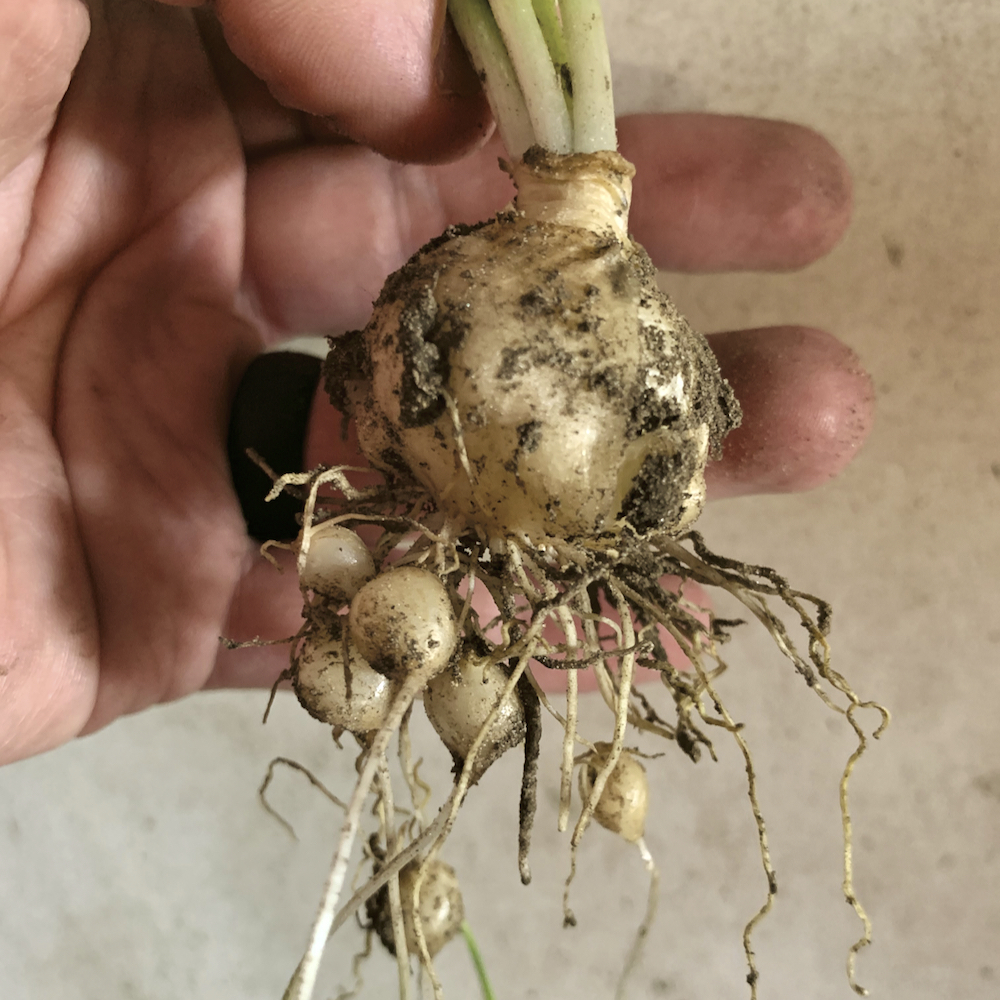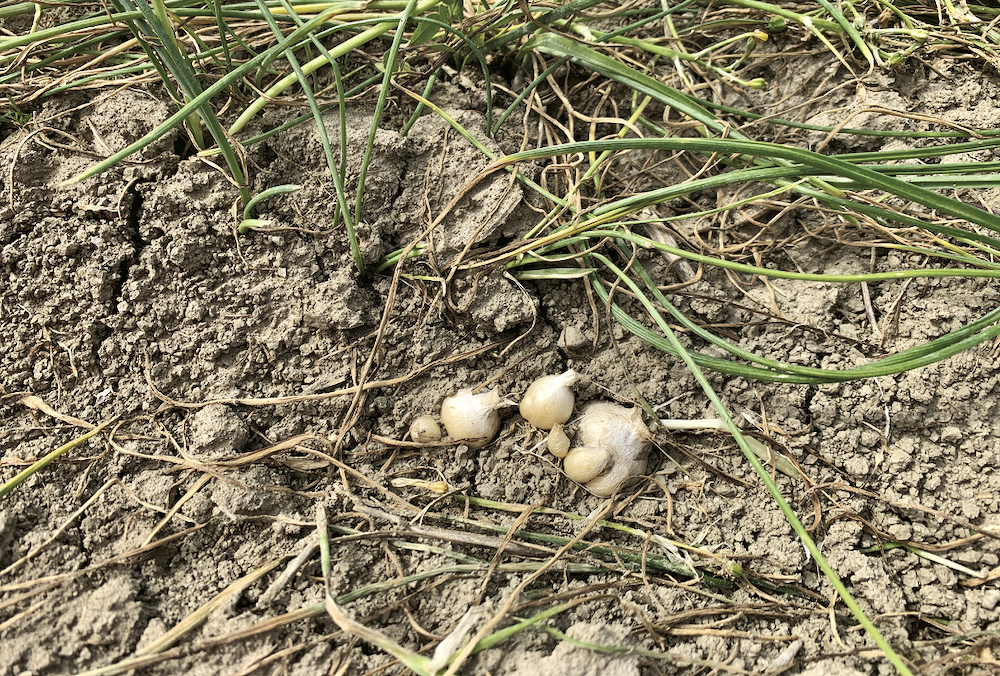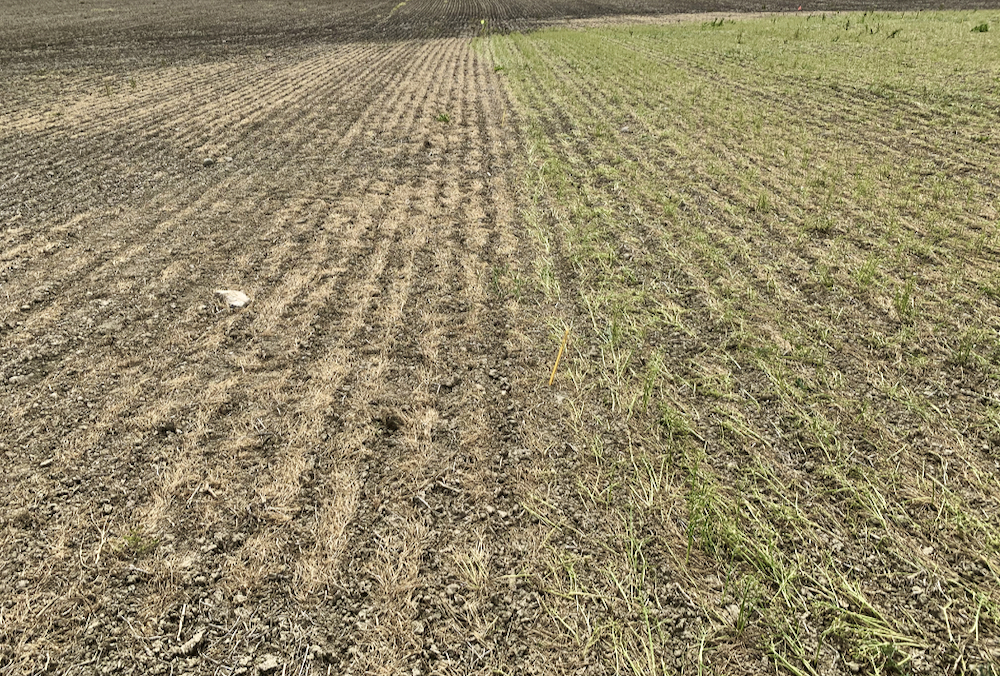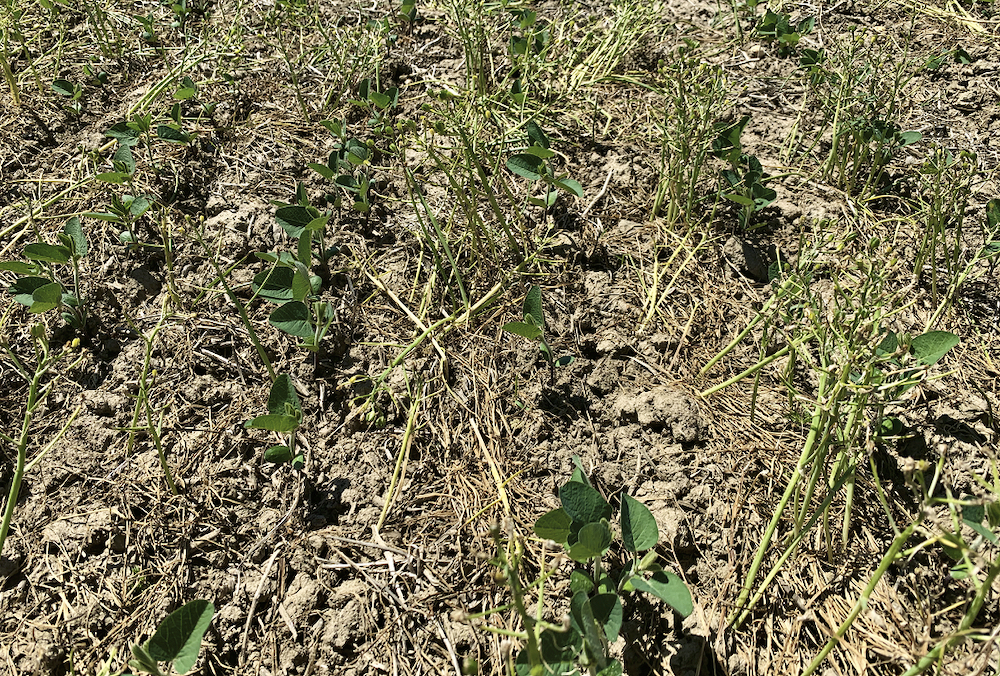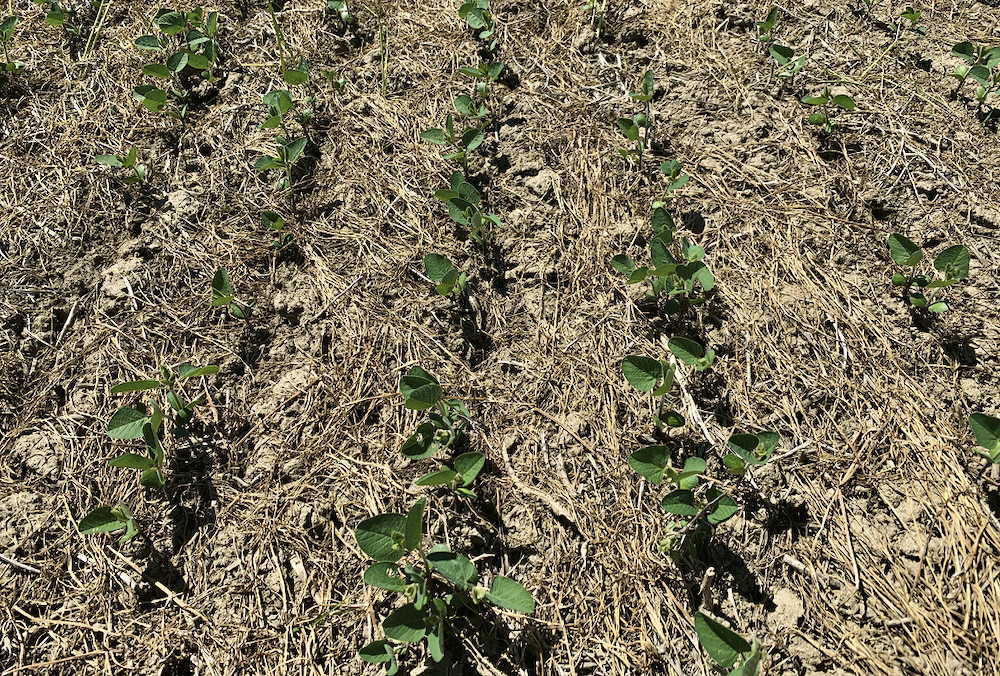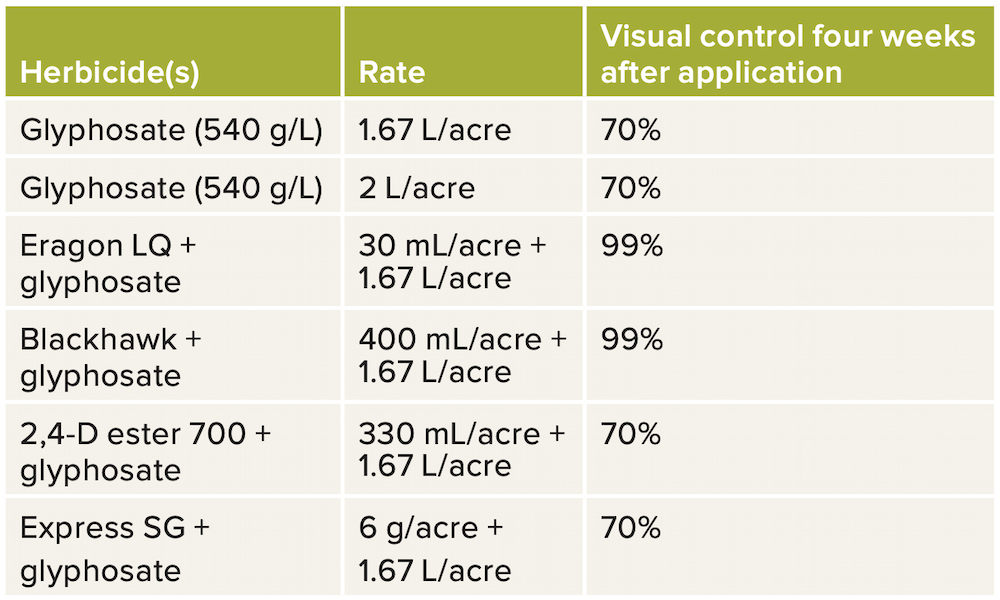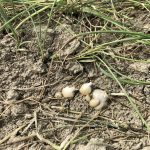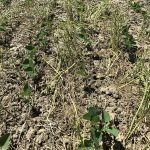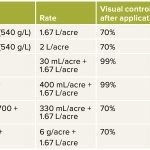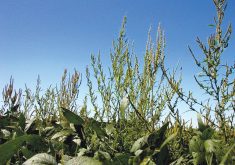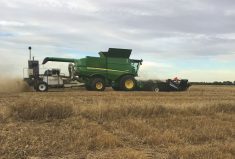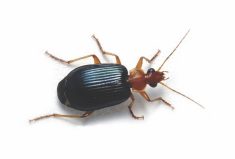
#Pest Patrol 2022 February II -Figure 1 -Uncommon weeds from 2021 -Part 3 of 3 -Star of Bethlehem
FIGURE 1: Star of Bethlehem in flower during late May.
Photo: Supplied
#Pest Patrol 2022 February II -Figure 2 -Uncommon weeds from 2021 –Part 3 of 3 –bulbs
FIGURE 2: The primary bulb of Star of Bethlehem along with several smaller and easily detached bulbs that will create new seedlings.
Photo: Supplied
#Pest Patrol 2022 February II -Figure 3 -Uncommon weeds from 2021 –Part 3 of 3 –effects of tillage.jpb
FIGURE 3: Tillage will move bulbs to new areas within a field where they can establish new colonies.
Photo: Supplied
#Pest Patrol 2022 February II -Figure 4 –Uncommon weeds from 2021 –Part 3 of 3 –side-by-side herbicide comparison
FIGURE 4: The farmer sprayed a mixture of glyphosate + Eragon LQ (left side) approximately 10 days prior to when the research trial was going to be sprayed (right side). Star of Bethlehem top growth appears to be most sensitive to herbicides like Eragon LQ, Blackhawk, Valtera and Authority (all from WSSA group 14).
Photo: Supplied
#Pest Patrol 2022 February II -Figure 5 -Uncommon weeds from 2021 –Part 3 of 3 –top-growth with glyphosate
FIGURE 5: Star of Bethlehem top- growth was relatively tolerant to glyphosate.
Photo: Supplied
#Pest Patrol 2022 February II -Figure 6 -Uncommon weeds from 2021 -Part 3 of 3 -top-growth with Eragon
FIGURE 6: Star of Bethlehem top- growth showed sensitivity to both Eragon LQ and Blackhawk.
Photo: Supplied
#Pest Patrol 2022 February II -Table 1 –Uncommon weeds from 2021 –Part 3 of 3
TABLE 1: Herbicide rates and control seen four weeks after application.
Photo: Supplied
This is the last of a three-part series that highlights “odd” weeds found in Ontario field crops this past year.
Star of Bethlehem (Ornithogalum umbellatum)
Is this worth worrying about? If you do a quick internet search, most results focus on how to grow this plant. As a member of the hyacinth family, it’s valued as an easy-to-grow garden ornamental that flowers early in the spring (Figure 1). On farmland, this perennial plant produces several, easily detached bulbs (Figure 2). These bulbs can then be spread by tillage (Figure 3), turning a relatively small patch into a large, dense stand in the span of a year. Several sources state this plant is toxic to livestock when consumed. All parts of the plant contain cardiac glycosides, with the highest concentration occurring in the bulbs. Consumption at high enough quantities can lead to cardiac arrhythmias.
Read Also

Could crop sharing be a viable option for your farm?
Crop sharing could be a good option for young and beginning farmers.
Management: Very little information exists on Star of Bethlehem sensitivity to herbicides. The University of Southern Illinois evaluated herbicide efficacy both in the year of application and the following spring. They found that paraquat (the active ingredient in Gramaxone) provided the best control of Star of Bethlehem the spring following application. Paraquat was also effective at controlling top growth at two weeks after application, as were several herbicides classified under “WSSA group 14” (e.g. Valtera, Authority). Glyphosate was less effective, only providing suppression of top growth.
Several soybean burndown herbicides were evaluated during the 2021 season in Ontario. Paraquat was not included because its use is restricted in Canada. Star of Bethlehem response to herbicides in the Ontario field trial was similar to the University of Southern Illinois study. Herbicides that contained “WSSA group 14” active ingredients (e.g. Eragon LQ, Blackhawk) were most effective at controlling top growth. Increasing the rate of glyphosate did not improve the top growth control of Star of Bethlehem (Table 1).
Citations: Star of Bethlehem
- Illinois Wild Flowers (illinoiswildflowers.info)
- Star of Bethlehem Management (Southern Illinois University)
- Star of Bethlehem Toxicity (goatworld.com)
Have a question you want answered? Hashtag #PestPatrol on Twitter to @cowbrough or email Mike at [email protected].

